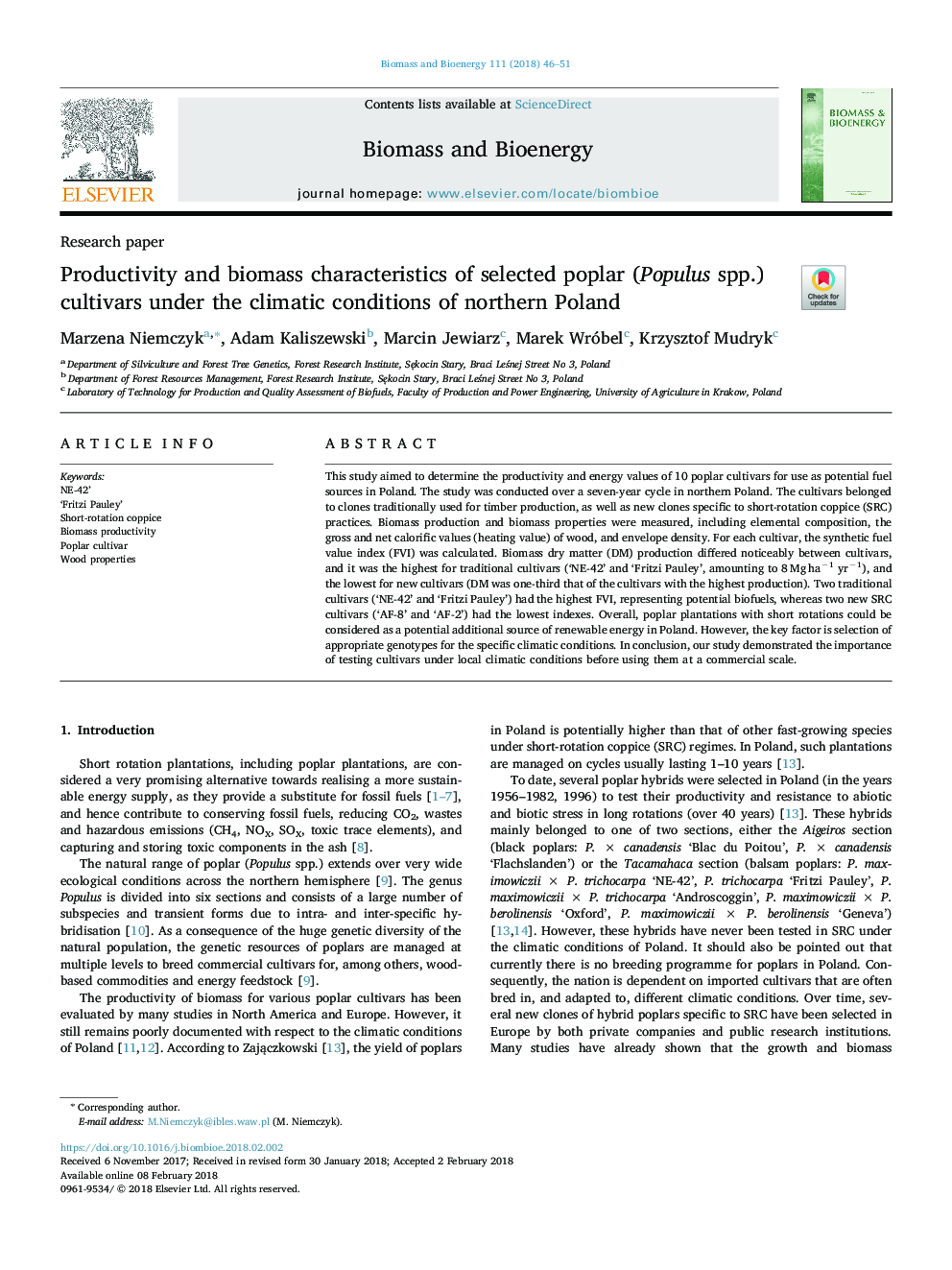| Article ID | Journal | Published Year | Pages | File Type |
|---|---|---|---|---|
| 7062934 | Biomass and Bioenergy | 2018 | 6 Pages |
Abstract
This study aimed to determine the productivity and energy values of 10 poplar cultivars for use as potential fuel sources in Poland. The study was conducted over a seven-year cycle in northern Poland. The cultivars belonged to clones traditionally used for timber production, as well as new clones specific to short-rotation coppice (SRC) practices. Biomass production and biomass properties were measured, including elemental composition, the gross and net calorific values (heating value) of wood, and envelope density. For each cultivar, the synthetic fuel value index (FVI) was calculated. Biomass dry matter (DM) production differed noticeably between cultivars, and it was the highest for traditional cultivars ('NE-42' and 'Fritzi Pauley', amounting to 8â¯Mgâ¯haâ1 yrâ1), and the lowest for new cultivars (DM was one-third that of the cultivars with the highest production). Two traditional cultivars ('NE-42' and 'Fritzi Pauley') had the highest FVI, representing potential biofuels, whereas two new SRC cultivars ('AF-8' and 'AF-2') had the lowest indexes. Overall, poplar plantations with short rotations could be considered as a potential additional source of renewable energy in Poland. However, the key factor is selection of appropriate genotypes for the specific climatic conditions. In conclusion, our study demonstrated the importance of testing cultivars under local climatic conditions before using them at a commercial scale.
Related Topics
Physical Sciences and Engineering
Chemical Engineering
Process Chemistry and Technology
Authors
Marzena Niemczyk, Adam Kaliszewski, Marcin Jewiarz, Marek Wróbel, Krzysztof Mudryk,
